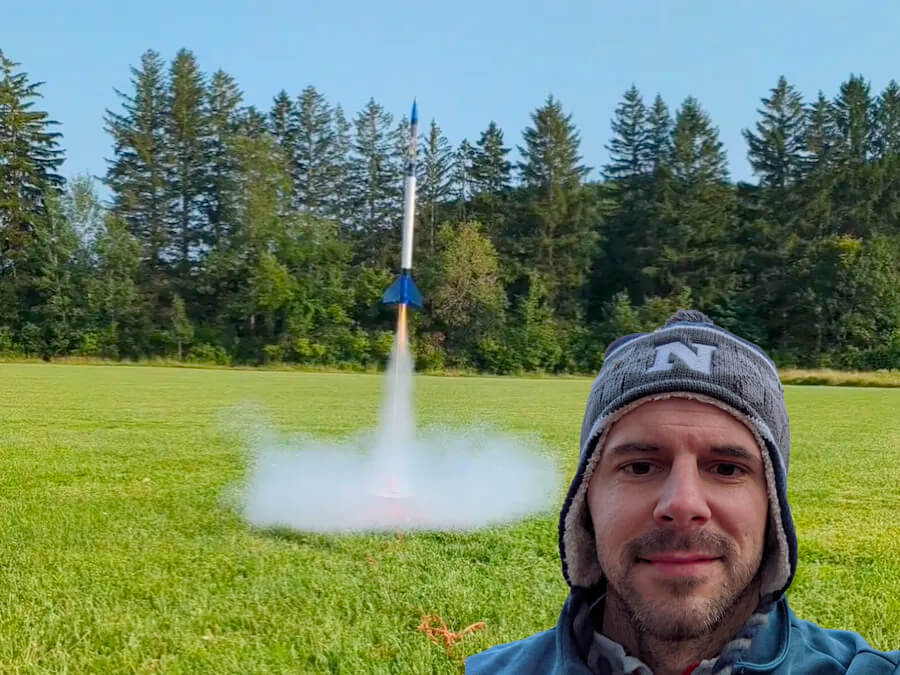Blues Amplifiers are community experts who provide guidance, create engaging resources, and lead by example in the Wireless IoT. "Behind the Amplifier" is a new series where we highlight each of our awesome contributors, showcasing what they are working on, and sharing their thoughts on the IoT.
Today, we are excited to introduce you to Justin Lutz. Let's hear from Justin about what motivates his interest in Blues and the IoT.
The Interview
Getting to Know Justin
Rob: Hi Justin, can you give us a quick introduction?
Justin: Sure - my name is Justin Lutz, I am a forever learner that loves to dive into new areas. I've worked for a defense contractor in the US for over 20 years, but I've also been a competitive runner, avid cyclist and rower, military reservist, and amateur astronomer. I'm also excited about the potential for TinyML and its impact it can make in the world, which led me to develop AI and IoT projects in that space. I have a wonderful family and we live in the northeast United States.
Rob: What motivated you to become involved with Blues in the IoT community?
Justin: With the expanding potential of embedded AI (TinyML), I think there will be more and more opportunity to do inference at the sensor. Since you don't need to send reams of raw data to a central server to run your model, you can now just send the inference result back, which is smaller, event-based, and easier to send over an LTE network. Blues offers a straight-forward solution to implementing IoT capabilities in remote areas where sensor nodes may exist. Instead of dealing with tedious AT commands, Blues offers a robust JSON-based API with probably the best documentation and tutorials I've seen for hardware, making it straightforward to get the inference result and route it to a dashboard for visualization.
Contributions as a Blues Amplifier
Rob: Can you share more about your role as a Blues Amplifier and your contributions to the growth of IoT communities?
Justin: I've developed and published several projects on hackster.io, as well as attended several events in the Boston area where Blues has been featured (Edge Impulse Summit and Boston Hardware Group meetup). This has allowed me to interface with Blues employees and share my use cases that I have developed.
Rob: How do you see your advocacy making an impact in this field?
Justin: If anything, I hope it brings visibility into the potential of TinyML in remote locations, and the ease with which you can develop IoT/AIoT solutions with Blues.
Example Projects from Justin
Water Quality Monitor with Blues - Monitor water temp, ORP, TDS, and air temp/humidity to determine if water quality is degrading.

Take care of your most precious cargo with Cargus - Cargus monitors the baby car seat. If it detects a baby in the car seat and an idle car, it will send a text message to the parent.
Air-lert: Notify Workers of unsafe environmental conditions! - An alert is given (via a speaker and text message) if unsafe air conditions are detected and a person is in the room.
Notable Achievements
Rob: Have you received any awards or recognitions for your contributions?
Justin: I received a runner up award in a Hackster project, involving pothole identification and notification using an LTE network. It was featured at this year's Hackster Impact Summit. As a great example of how easy Blues makes things, the majority of my time spent on this project was devoted to getting the Amazon IOTCore certificates to work and getting the MQTT workflow set up. With Blues, I would have spent one tenth of the time getting the inference and GPS coordinates and routing to a dashboard (like Datacake) for visualization on a map.
Future Goals and Advice
Rob: What are your future goals and aspirations within the IoT space? And how do you envision the future of IoT technology, and how do you plan to contribute to it?
Justin: I would like to continue to develop projects and “ride the wave” of TinyML/AIoT as it increases in popularity and capability. I think the IoT will become ubiquitous as capability improves in terms of processing, battery life, and cellular coverage. IoT will make it possible to have sensors and data collection nodes in any part of the world.
Rob: What advice do you have for individuals who want to become active proponents of Blues or IoT technologies?
Justin: Get a starter kit and try it out! You will be amazed at how straight-forward it is to use. And as mentioned previously, the documentation and tutorials are some of the best I have ever seen.
Conclusion
Rob: Thank you to much Justin for sharing this with us! We look forward to seeing your continued contributions to the Blues community.
Are you a passionate and helpful developer who is eager to share your knowledge of Blues? Apply here to become an Amplifier!


